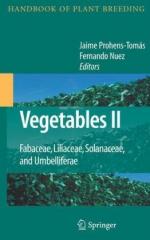|
This section contains 1,331 words (approx. 5 pages at 300 words per page) |

|
The Fabaceae family, known as legumes, are one of the most important plant families in both ecological and economic terms. Legumes help increase soil nitrogen and provide rich sources of vegetable protein for humans, livestock, and wild animals.
Structure
The flowers of the legume family are diverse but uniformly bilaterally symmetric. Indeed, fifty-million-year-old fossil legume flowers provide the first instance of bilaterally symmetrical flowers in the fossil record of flowering plants. Most legumes have five petals and five sepals, with the sepals commonly fused at least at the base. The five petals commonly occur as one large upper petal, two lower petals that clasp the ovary and stamens, and two lateral petals that often act as a platform for a landing bee (or other insect). There are deviations to this pattern, including a common one where petals are all alike and arranged in a radially symmetric fashion even...
|
This section contains 1,331 words (approx. 5 pages at 300 words per page) |

|


